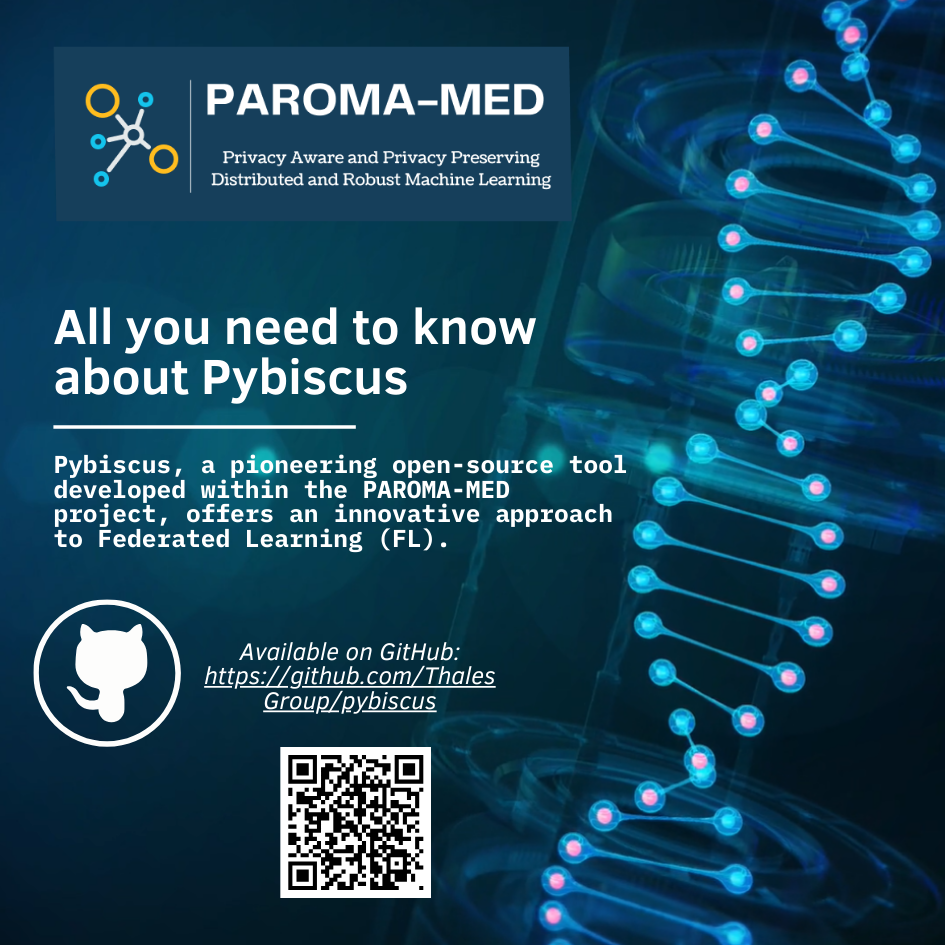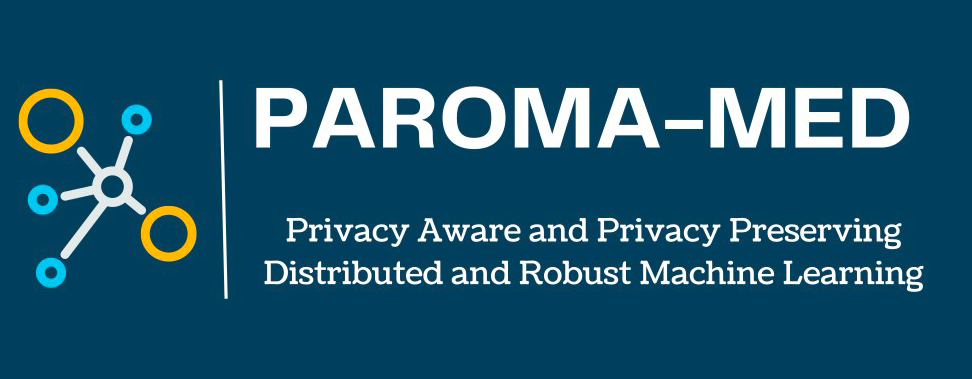All you need to know about Pybiscus

Pybiscus, a pioneering open-source tool developed within the PAROMA-MED project, offers an innovative approach to Federated Learning (FL).
Available on GitHub: https://github.com/ThalesGroup/pybiscus
Here are six key points to understand Pybiscus and its impact:
- What is Pybiscus?
Built on Flower, an open-source Federated Learning framework, Pybiscus provides an easy-to-use pipeline for deploying FL solutions. It is a creation of Thales and is freely available on GitHub: Pybiscus Repository. - Why Was Phybiscus Developed?
As FL frameworks evolve, many remain research-focused, with limitations for practical deployment. Pybiscus addresses these gaps, including eliminating code duplication, simplifying configurations, and separating core components like client, server, and machine learning code. - Its Significance in PAROMA-MED
Pybiscus ensures a robust, easily deployable FL solution, enhancing the project’s testbeds while supporting its mission to integrate reliable, scalable technologies. - Sharing With the Community
By remaining open-source, Phybiscus empowers other projects and researchers to contribute to and benefit from its advancements, fostering innovation across multiple sectors. - Benefits
- Modular: Compatible with any PyTorch model and dataset.
- Flexible: Uses YAML configurations to streamline deployment without altering core code.
- User-Friendly: Equipped with a Command Line Interface, detailed debug messages, and containerized versions for seamless use.
- Code Separation: Ensures deployment ease and scalability.
- Collaborations and Impact
Pybiscus is being shared with projects like Secured, solving challenges in creating robust open-source frameworks. It is a vital asset for accelerating progress in Federated Learning while addressing pressing technical and scalability needs.
Recent Posts




